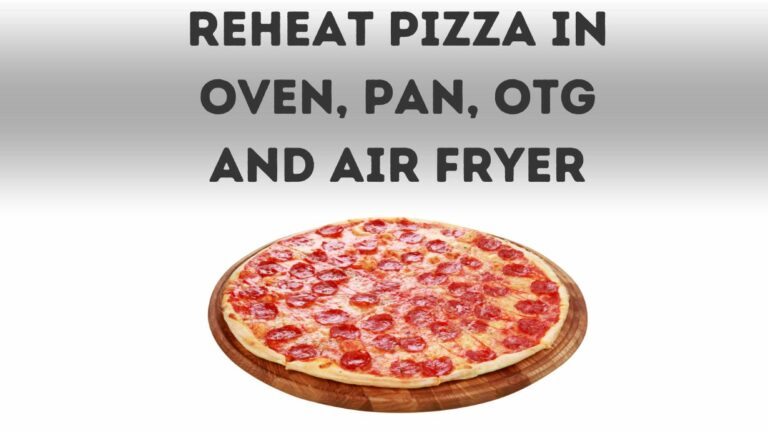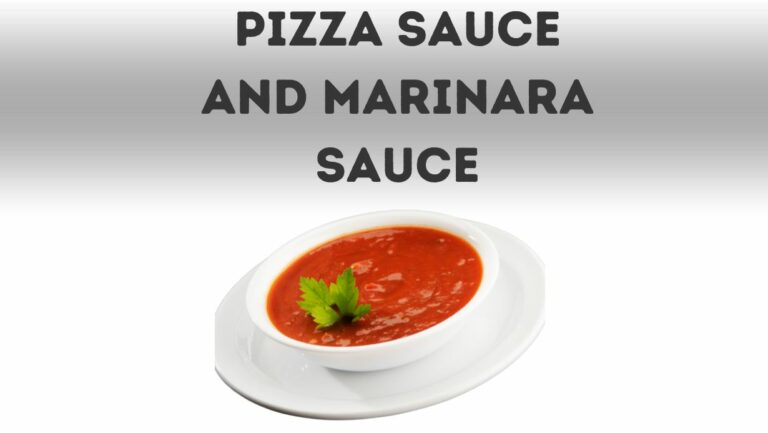
Raw Mushrooms On Pizza
Pizza has been delighting taste buds for centuries, evolving from its humble beginnings in Naples, Italy, to become one of the world’s most beloved comfort foods. Today, pizza can be found in various forms in almost every corner of the globe, with each region putting its unique spin on this versatile dish. A major part of what makes pizza so universally adored is the ability to customize it with a vast array of toppings, catering to every individual’s preferences and dietary requirements.
When it comes to pizza toppings, the possibilities are seemingly endless. From classic combinations such as Margherita and pepperoni to more experimental and avant-garde options, everyone has their own personal favorite. However, with so many options available, there are bound to be debates about the best toppings and how they should be prepared. One such ongoing discussion is whether or not raw mushrooms should be used as a pizza topping.

In this blog post, we will delve into the raw mushrooms on pizza debate by examining the different types of mushrooms typically used, the pros and cons of using raw mushrooms, and alternative cooking techniques for those who prefer a different approach. By the end of this comprehensive guide, you will have a better understanding of the raw mushroom conundrum and be able to make an informed decision when it comes to your next pizza creation. So, let’s jump right into the world of fungi and find out if raw mushrooms have a rightful place on our favorite pies!
Popular Mushroom Varieties for Tantalizing Pizza Toppings
Before diving into the debate about raw mushrooms on pizza, it’s essential to have a clear understanding of the different types of mushrooms that are commonly used as toppings. Each variety has its unique flavor and texture profile, which can influence your decision about whether to use them raw or cooked. Here are the top five mushroom varieties that make frequent appearances on pizzas:
White Button Mushrooms
White button mushrooms are the most common variety found in grocery stores and are often used on pizzas. Their mild, slightly earthy flavor and tender texture make them a versatile option for pizza toppings. They can be used either raw or cooked and pair well with a wide range of other ingredients.
Cremini Mushrooms
Cremini mushrooms, sometimes referred to as baby portobellos, are a close relative of white button mushrooms but have a slightly deeper flavor and firmer texture. These brown mushrooms are popular for their earthy and savory taste, which adds depth to pizza toppings and holds up well when cooked or used raw.
Portobello Mushrooms
Portobello mushrooms are mature cremini mushrooms with a large, flat cap and a meaty texture. They have a robust, earthy flavor that pairs well with bold ingredients such as onions, garlic, and strong cheeses. While we can use portobellos raw, they are often grilled or roasted before being added to pizzas to enhance their natural flavors.
Shiitake Mushrooms
Shiitake mushrooms, native to East Asia, have a distinctive taste that is both earthy and smoky. Their unique flavor and chewy texture make them a popular choice for gourmet pizzas. While shiitake mushrooms can be eaten raw, cooking them brings out their full flavor potential and tenderizes their otherwise tough texture.
Oyster Mushrooms
Oyster mushrooms have a delicate, mild flavor with a slight hint of sweetness. Their velvety texture and unique fan-shaped appearance make them a visually appealing addition to pizzas. Oyster mushrooms can be used raw or cooked, but cooking helps to intensify their flavor and improve their texture.
By understanding the characteristics of these popular mushroom varieties, you can make an informed decision about whether to use them raw or cooked on your pizza. In the next section, we will explore the pros and cons of using raw mushrooms as a pizza topping, as well as alternative cooking techniques to consider.
Raw Mushrooms on Pizza
Nutritional Benefits
-
- Retaining Vitamins and Minerals: When it comes to raw mushrooms on pizza, one of the primary benefits is the preservation of their nutritional content. Cooking can cause the loss of certain vitamins and minerals, particularly water-soluble vitamins like vitamin B and C. By adding raw mushrooms to your pizza, you retain these essential nutrients that contribute to overall health.
- Lowering Fat Content: Raw mushrooms are naturally low in fat, making them a healthier topping choice compared to processed meats or extra cheese. By opting for raw mushrooms, you can enjoy a flavorful pizza while keeping your fat intake in check.
Textural Considerations
-
- Crispness: Using raw mushrooms as a topping adds a unique crispness to your pizza that might be lost if they were cooked beforehand. This crunchy texture creates a pleasant contrast with the soft dough and gooey cheese, providing a delightful mouthfeel with every bite.
- Variety in Mouthfeel: The incorporation of raw mushrooms on pizza introduces a different texture compared to traditional toppings. This variety in mouthfeel can elevate your pizza experience and keep things interesting, especially for those who enjoy trying new culinary combinations.
Flavor Profile
-
- Earthy Taste: Raw mushrooms are known for their earthy taste, which can add depth to your pizza’s flavor profile. This distinct taste complements the tangy tomato sauce and rich cheese, creating a harmonious blend of flavors that will leave your taste buds satisfied.
- Enhancing Other Flavors: The subtle earthiness of raw mushrooms can also serve to enhance the flavors of other toppings on your pizza. When combined with ingredients like caramelized onions, roasted bell peppers, or savory meats, raw mushrooms can help to bring out the best in each topping, creating a perfectly balanced and delicious pizza.
Convenience and Ease
-
- Time-saving: Using raw mushrooms on pizza is a time-saving option, as you can skip the additional step of pre-cooking them. This convenience allows you to get your pizza in the oven faster, so you can enjoy a delicious meal without spending extra time in the kitchen.
- Minimal Prep Work: Aside from washing and slicing your mushrooms, there is very little prep work involved when using them raw on pizza. This minimal effort makes raw mushrooms an appealing choice for busy individuals who still want to enjoy a homemade pizza with fresh, flavorful toppings.
Alternatives for Raw Mushroom Lovers: From Pre-cooking to Complementary Toppings
If you’re unsure about using raw mushrooms on your pizza but still want to enjoy their earthy flavors, consider these alternatives and compromises that can help you strike a balance between taste, texture, and convenience.
Pre-cooking Mushrooms
Pre-cooking mushrooms can enhance their flavor and improve their texture on a pizza. Here are three popular methods:
- Sautéing mushrooms in a bit of oil or butter is a quick and easy way to draw out their natural flavors and add a delicious caramelized touch to your pizza topping. Cook them over medium heat, stirring occasionally until they’re tender and golden brown. Season with salt and pepper to taste, then add them to your pizza before baking.
- Grilling mushrooms imparts a smoky flavor that works well with other bold pizza toppings. Simply brush the mushrooms with olive oil, season with salt and pepper, and grill on medium-high heat until they’re tender and have grill marks. Slice or chop them before adding to your pizza.
- Roasting mushrooms in the oven deepens their flavor and gives them a crispy, chewy texture. Toss the mushrooms with olive oil, salt, and pepper, then spread them out on a baking sheet. Roast in a preheated oven at 425°F (220°C) for 15-20 minutes, or until they’re tender and golden brown. Add the roasted mushrooms to your pizza and bake as usual.
Using Marinated or Pickled Mushrooms
Marinated or pickled mushrooms offer a tangy twist to your pizza, adding an extra layer of flavor. You can find pre-marinated or pickled mushrooms at most grocery stores, or you can prepare them yourself by marinating fresh mushrooms in a mixture of vinegar, olive oil, herbs, and spices. Simply drain the mushrooms and add them to your pizza before baking.
Pairing with Complementary Toppings
Choosing the right toppings can help to balance the flavors and textures of your pizza, especially when using mushrooms. Consider these complementary options:
- Cheese varieties experiment with different types of cheese to enhance the flavor of your mushroom pizza. Classic options like mozzarella, provolone, and parmesan work well, but don’t shy away from trying bolder cheeses like gorgonzola, fontina, or smoked gouda for a unique twist.
- Other vegetable mushrooms pair well with a variety of vegetables, such as onions, bell peppers, olives, spinach, and artichokes. These additional toppings can add more flavor, texture, and color to your pizza, creating a satisfying and visually appealing meal.
- Protein options adding protein to your mushroom pizza can create a more filling and well-rounded meal. Consider options like grilled chicken, Italian sausage, prosciutto, or even shrimp. These proteins can complement the earthy flavors of mushrooms while adding some extra substance to your pizza.
With these alternatives and compromises, you can still enjoy the wonderful taste of mushrooms on your pizza without the potential drawbacks of using them raw. So experiment to find the perfect combination that suits your taste buds and culinary preferences.
Tips for Cooking Pizza with Raw Mushrooms
Choosing the right type of mushroom
Selecting the appropriate mushroom variety can greatly enhance the overall taste and texture of your pizza. While white button, cremini, and portobello mushrooms are the most common choices, you can also experiment with shiitake or oyster mushrooms for a unique flavor profile. Consider the other toppings on your pizza and how their flavors will interact with your chosen mushroom type.
Properly washing and slicing mushrooms
It’s essential to clean your mushrooms thoroughly before using them as a topping, as they can harbor dirt and debris. To do this, use a damp paper towel to gently wipe each mushroom, or briefly rinse them under cold water and pat them dry. Avoid soaking mushrooms, as they can become waterlogged, leading to a soggy pizza.
When slicing mushrooms, aim for thin, even slices that will cook evenly on the pizza. Thicker slices can retain too much moisture and negatively affect the pizza’s texture.
Placing mushrooms strategically on pizza
To ensure that your mushrooms cook evenly and release their moisture without making your pizza soggy, place them strategically on the pizza. Distribute the mushroom slices evenly across the pizza, avoiding large clumps, which could lead to uneven cooking. Placing the mushrooms atop the cheese can also help protect the crust from excess moisture.
Adjusting cooking time and temperature
When using raw mushrooms on pizza, it’s crucial to adjust your cooking time and temperature to ensure that the mushrooms are cooked through without overcooking the rest of the pizza. Consider increasing the oven temperature by 25°F to help the mushrooms cook faster and release their moisture more quickly. Keep an eye on the pizza as it cooks and extend the cooking time as needed, ensuring that the crust is golden brown and the mushrooms are cooked to your desired level.
Experimenting with pizza dough types
Different types of pizza dough can handle raw mushrooms better than others. For example, a thicker crust may be better suited to raw mushrooms, as it can absorb some of the moisture released during cooking without becoming soggy. On the other hand, a thin-crust pizza may benefit from pre-cooking the mushrooms to reduce their moisture content. Don’t be afraid to experiment with various dough recipes to find the perfect match for your mushroom-topped pizza.
Lastly, using raw mushrooms as a pizza topping can lead to a delicious and unique pizza experience when done correctly. By choosing the right type of mushrooms, properly cleaning and slicing them, placing them strategically on the pizza, adjusting cooking time and temperature, and experimenting with different dough types, you can create a mouthwatering pizza that highlights the earthy, flavorful nature of mushrooms.

Handsomepizza.com is the brainchild of two pizza-obsessed friends who wanted to share their love of pizza. We are dedicated to bringing you the latest news, reviews, and insights on pizza.







